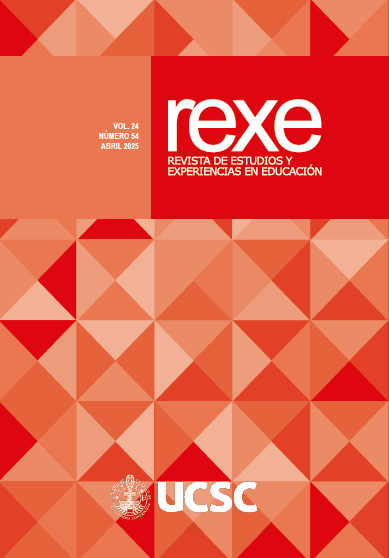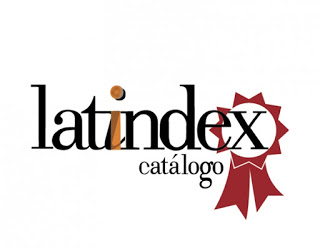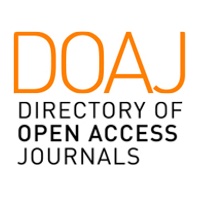What are the preferences of boys and girls regarding their learning environments in the Chilean public school system?
DOI:
https://doi.org/10.21703/rexe.v24i54.2776Keywords:
Learning environment, Learning conditions, Primary education, School climate, ClassroomAbstract
The study aims to analyze the demands made by fifth-grade students from Chilean public schools regarding their learning environments. A qualitative approach was used, employing content analysis techniques. The corpus of analysis is based on texts written by children in response to the question: Would you ask your principal or teacher for something at school?, within the framework of the School Coexistence Monitoring System of the Habilidades para la Vida (Skills for Life), JUNAEB Program. Out of a total of 870 responses, 30.2% contained demands and/or requests related to the physical and/or psychosocial learning environment. Regarding the psychosocial environment, students highlight the need to establish kind and close relationships with adults, receive fair and equal treatment, and have teachers who are attentive to their needs and concerns. They also express the desire to learn in a fun and engaging way and ask their teachers to believe them and remember that they, too, were once children. In terms of the physical environment, students demand adequate material conditions for learning, such as the maintenance and repair of school infrastructure and furniture, the management of environmental factors to improve learning conditions (temperature, lighting, ventilation), the incorporation of elements addressing safety concerns in classrooms (lockers and cameras), and the ability to personalize and make decisions about their environment, including classroom decoration and seating arrangements. Understanding children's perspectives enhances the comprehension of the role that school environments play in learning and daily interactions, providing valuable input for the development of improvement plans and the strengthening of school climate.
Downloads
References
Adlerstein, C., González, A. & Manns, P. (2016). Pedagogías para habitar el jardín Construcciones desde el Modelamiento del Ambiente Físico de Aprendizaje. Santiago: Ediciones UC.
Agencia Calidad de la Educación (2014) Factores asociados a resultados simce e indicadores de desarrollo personal y social. https://archivos.agenciaeducacion.cl/Factores_asociados_Simce_e_Indicadores_desarrollo_personal_social_2014-.pdf
Araya-Crisóstomo, S., & Urrutia, M. (2022). Uso de metodologías participativas en prácticas pedagógicas del sistema escolar. Pensamiento Educativo, Revista De Investigación Latinoamericana (PEL), 59(2). https://doi.org/10.7764/PEL.59.2.2022.9
Ascorra, P., López, V., & Urbina, C. (2016). Participación estudiantil en escuelas chilenas con buena y mala convivencia escolar. Revista de Psicología, 25(2). https://doi.org/10.5354/0719-0581.2016.44686
Baars, S., Schellings, G. L. M., Krishnamurthy, S., Joore, J. P., den Brok, P. J., & van Wesemael, P. J. V. (2021). A framework for exploration of relationship between the psychosocial and physical learning environment. Learning Environments Research, 24(1), 43–69. https://doi.org/10.1007/s10984-020-09317-y
Barrett, P., Davies, F., Zhang, Y., & Barrett, L. (2015). The impact of classroom design on pupils’ learning: Results of a holistic, multi-level analysis. Building and Environment, 89, 118-133. https://doi.org/10.1016/j.buildenv.2015.02.013
Cleveland, B., & Fisher, K. (2014). The evaluation of physical learning environments: A critical review of the literature. Learning Environments Research, 17(1), 1–28.https://doi.org/10.1007/s10984-013-9149-3
Chang V., Fisher D. (2003) The validation and application of a new learning environment instrument for online learning in higher education, Technology-Rich Learning Environments, pp. 1-20 https://doi.org/10.1142/9789812564412_0001
Che Ahmad, C. N., Osman, K., & Halim, L. (2013). Physical and psychosocial aspects of the learning environment in the science laboratory and their relationship to teacher satisfaction. Learning Environments Research, 16(3), 367–385. https://doi.org/10.1007/s10984-013-9136-8
Fisher, E. (2021). Review of Flexible Learning Spaces in Education. Research and Evaluation in Education, Technology, and Design. https://digitalco mons.unl.edu/cehsgpirw/42
Hart, R. A. (1993). La participación de los niños. De la participación simbólica a la participación auténtica. Serie Ensayos Innocenti, 4. https://www.unicef-irc.org/publications/538-la-participaci%C3%B3n-de-los-ni%C3%B1os-de-la-participaci%C3%B3n-simbolica-a-la-participaci%C3%B3n.html
Higgins, S., Hall, E., Wall, K., Woolner, P., & Mccaughey, C. (2005). The Impact of School Environments: A literature review. The Centre for Learning and Teaching School of Education, Communication and Language Science University of Newcastle. http://ruccs.rutgers.edu/images/personal-zenon pylyshyn/docs/ArchitecturalSpace/ImpactOfSchoolEnvironments_Higgens_2005.pdf
Hill, M. C. y Epps, K. K. (2010). The Impact of Physical Classroom Environment on Student Satisfaction and Student Evaluation of Teaching in the University Environment- Academy of Educational Leadership Journal (Vol. 14). http://digitalcommons.kennesaw.edu/facpubs
JUNAEB-Programa Habilidades Para La Vida. (2019) Informe Nacional Monitoreo de la Convivencia Escolar del año 2018. https://www.junaeb.cl/wp-content/uploads/2023/03/Monitoreo-de-la-Convivencia-Escolar-Programa-Habilidades-Para-la-Vida.pdf
López, V., Bilbao, M. A., Ascorra, P., Moya, I., & Morales, M. (2014). La Escala de Clima Escolar: Adaptación al español y Validación en Estudiantes Chilenos. Universitas Psychologica, 13(3). https://doi.org/10.11144/javeriana.upsy13-3.ecea
López, V., Torres-Vallejos, J., Ascorra, P., Villalobos-Parada, B., Bilbao, M., & Valdés, R. (2018). Construction and validation of a classroom climate scale: a mixed methods approach. Learning Environments Research, 21(3), 407–422. https://doi.org/10.1007/s10984-018-9258-0
Marshall PD, Losonczy-Marshall M. (2010) Classroom ecology: relations between seating location, performance, and attendance. Psychol Rep. 567-77 https://doi.org/10.2466/11.22.PR0.107.5.567-57
Ministerio de Educación Nacional. (2011). Ambientes de Aprendizaje. Colombia Aprende: http://www.colombiaaprende.edu.co/html/productos/1685/w3-article-288989.html
Ministerio de Educación. (2015). Política Nacional de Convivencia Escolar 2015/2018. Unidad de Transversalidad Educativa. Santiago, Chile: http://www.mineduc.cl/wpcontent/uploads/sites/19/2015/12/politica-noviembre-definitiva.pdf
Moraima Campos, M., & Auxiliadora Mújica, L. (2008). El análisis de contenido: Una forma de abordaje metodológico. Laurus, 14(27), 129-14. https://www.redalyc.org/articulo.oa?id=76111892008
Morales , M. ., Ortiz-Mallegas , S. ., & López , V. . (2022). Violencia escolar, infancia y pobreza: perspectivas de estudiantes de educación primaria. Pensamiento Educativo, Revista De Investigación Latinoamericana (PEL), 59(1). https://doi.org/10.7764/PEL.59.1.2022.2
ONU - Asamblea General, Convención sobre los Derechos del Niño, 20 noviembre 1989, United Nations, Treaty Series, vol. 1577, p. 3, disponible en esta dirección: https://www.refworld.org.es/docid/50ac92492.html
Organisation for Economic Cooperation and Development OCDE, (2017). Learning Environments Evaluation Programme (LEEP). https://www.oecd.org/education/LEEP_Brochure_OECD.pdf
Organisation for Economic Co-operation and Development., & Teaching and Learning International Survey. (2009). Creating effective teaching and learning environments: first results from TALIS. OECD, Teaching and Learning International Survey.
Organisation for Economic Co-operation and Development OCDE (2012) Ambientes Innovadores de Aprendizaje The Nature of Learning: Using Research to Inspire Practice. https://www.oecd.org/education/ceri/The%20Nature%20of%20Learning.Practitioner%20Guide.ESP.pdf
Rubie-Davies, C., Asil, M., & Teo, T. (2016). Assessing measurement invariance of the student personal perception of classroom climate across diferent ethnic groups. Journal of Psychoeducational Assessment, 34(5), 442–460. https://doi.org/10.1177/0734282915612689
Tijmes, Cecilia. (2012). Violencia y Clima Escolar en Establecimientos Educacionales en Contextos de Alta Vulnerabilidad Social de Santiago de Chile. Psykhe (Santiago), 21(2), 105-117 DOI: https://doi.org/10.7764/psykhe.21.2.548
UNICEF (2015). El aprendizaje bajo la lupa: nuevas perspectivas para América Latina y el Caribe. Panamá: Aguerrondo, I. y Valliant, D. https://learningportal.iiep.unesco.org/es/biblioteca/el-aprendizaje-bajo-la-lupa-nuevas-perspectivas-para-america-latina-y-el-caribe
UNICEF (2022 )Derecho a la educación de niños, niñas y adolescentes. Serie de formación sobre el enfoque basado en los derechos de la niñez. https://www.unicef.org/chile/media/7026/file/mod%202%20derecho%20educacion.pdf
Vergara, A., Peña, M., Chávez, P. & Vergara, E. (2015). Los niños como sujetos sociales: El aporte de los Nuevos Estudios Sociales de la infancia y el Análisis Crítico del Discurso. Psicoperspectivas, 14(1), 55-65. DOI: https://dx.doi.org/10.5027/psicoperspectivas-Vol14-Issue1-fulltext-544
Zandvliet D. & Broekhuizen A. (2017) Spaces for learning: development and validation of the School Physical and Campus Environment Survey, Learning Environ Research, 20:175–187, DOI: 10.1007/s10984-017-9228-y
Downloads
Published
Issue
Section
License
Copyright (c) 2024 Verónica Angulo De la fuente, Verónica López Leiva, Carolina Urbina Hurtado , Katty Bustos Zuñiga, Ana María Squicciarini Navarro

This work is licensed under a Creative Commons Attribution 4.0 International License.
Open Access Policy
This journal provides immediate open access to its content, based on the principle that offering the public free access to research fosters greater global knowledge exchange.
License
The REXE Journal, “Journal of Studies and Experiences in Education,” published by the Faculty of Education at the Universidad Católica de la Santísima Concepción, is distributed under a License. Creative Commons Atribución 4.0 Internacional.






